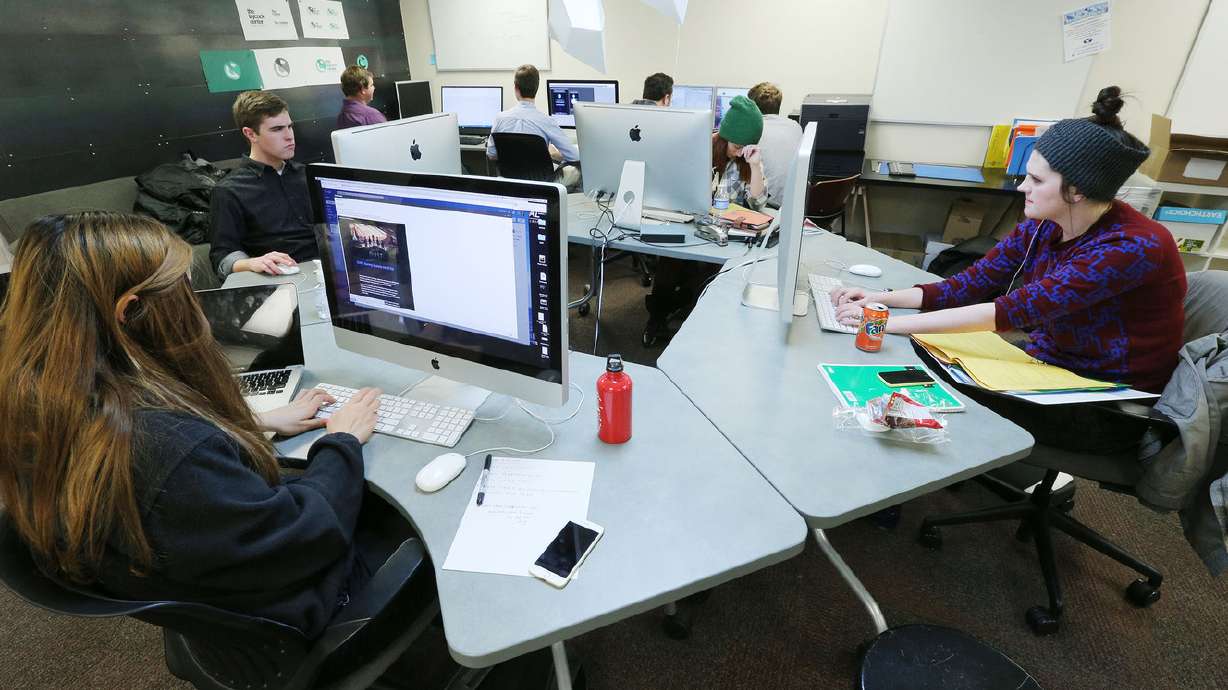Estimated read time: 4-5 minutes
This archived news story is available only for your personal, non-commercial use. Information in the story may be outdated or superseded by additional information. Reading or replaying the story in its archived form does not constitute a republication of the story.
PROVO — Students at BYU are part of a group working to bring an alternate-reality game to life that aims to get kids involved in STEM-based learning.
The BYU group has teamed with University of Maryland students, Tinder Transmedia and NASA scientists to develop the game, "DUST," with $2 million in funding from the National Science Foundation.
"DUST," expected to launch Jan. 26, is an online game where players follow a storyline and interact with real-world media. Players attempt to figure out why all adults have passed out after a meteor shower disperses in Earth's atmosphere. Players have to gather and analyze data, connect and compare ideas, and propose solutions.
BYU associate professor Derek Hansen came up with the idea for the game, which is geared toward players ages 12-18.
"This game is a way to really help players think of themselves as scientists and also help them to recognize that doing science can be fun," Hansen said.
It's really a new type of game that's just emerging, and it's a mix of interactive storytelling and game elements. It's kind of fun because it's like a story that plays out in mobile phones and across all these different media channels. This is an area I think that we'll see more and more of in the future.
–Derek Hansen, BYU associate professor
Economic growth in the past decade has been from companies such as Google, Facebook, and SpaceX — companies that innovate and rely on science, technology, engineering and math expertise, he said.
"It's really a new type of game that's just emerging, and it's a mix of interactive storytelling and game elements," Hansen said. "It's kind of fun because it's like a story that plays out in mobile phones and across all these different media channels. This is an area I think that we'll see more and more of in the future."
Shelbi Anderson, a student project manager for the game, said developing the game has been a wonderful, real-world experience.
"I can't tell you how much I've learned because of it," Anderson said. "We get to work on this $2 million grant for the National Science Foundation and NASA, and there's not really other places you could have that kind of opportunity."
Hansen said the game would not have happened without the talented and diverse group of students from BYU and the University of Maryland.
"We've had illustrators, graphic designers, storytellers, filmmakers, information technology students, computer science. We've had science experts and writers. I mean, it's pretty amazing," he said.
Glenn Lockwood teaches eighth grade and STEM courses at Dixon Middle School in Provo and has been offering feedback and even getting some students involved in the game design.
"I'm a real big proponent of gaming and … to try to find different things that help promote science in a different way with students," he said. "Anything to help get these kids excited about science and to do things in a little different format than we're used to, and still be learning about science stuff, I think is a great thing."

Lockwood said he's excited to incorporate the new game in his classroom once the game launches.
"(The game could be) one more tool in the belt to help get students to be excited and interested in science, and in general just be excited about solving problems," he said.
Initial response to the game at Salt Lake Comic Con and the Girl Scout Convention in Salt Lake City has been positive, Anderson said.
"The response is overwhelming really on how many people thought it was such a great idea, particularly among girls," she said.
Anderson said the hope of the game is to focus on minorities, including girls, and encourage them to have a stronger presence in STEM careers. The main character, Iris, who leads players through the game, is female.
Lockwood said the most important thing he can teach his students is how to solve problems.
"I'm helping to train students in fields of study (where) those jobs aren't even in existence yet," he said. "The only thing I can help them do is help them learn how to solve problems and to be able to attack something and research about it and figure out and get information. That's my job as a science teacher, and my job as a STEM teacher, and my job as an educator in general, I think."
The game will launch Jan. 26 with a free event at the Discovery Science Center, 886 W. 2600 North, Pleasant Grove. The event will run from 6-8 p.m., and attendees are invited to experience a star show, space simulators, a ROVER demo and food.
A trailer and introduction to the game can be found online at fallingdust.com.
Email: ebench@deseretnews.com








